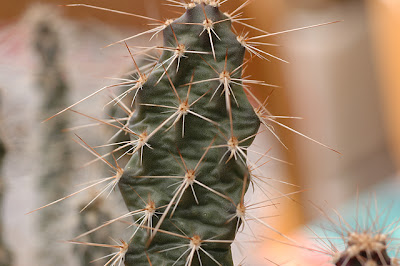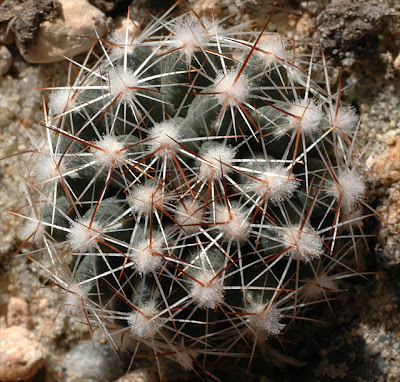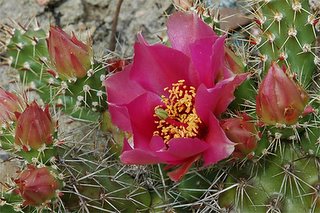I spent my Easter vacation in NYC and of course had to visit the New York Botanical Garden while in the neighborhood. The Easter weather was extremely cold with temperatures just above freezing – the cacti in the outdoor bed were all dormant so they seemed better prepared for the cold spell than we were ;-)
The NYBG outdoor cactus bed seems to be established or rearranged recently as very few of the plants are large and well established, one of the exceptions being a sprawling Opuntia pusilla.
Opuntia pusilla
View of cactus bed
Some of the dormant plants displayed beautiful winter colors, especially the O. basilaris and O. polyacantha cultivars were dazzling in their different shades of purple.
Opuntia basilaris 'Art Combe'
Opuntia polyacantha 'Candy Cane'
The Escobaria vivipara plants are growing just next to the footpath. Fortunately they weren’t trampled – in their withered state they could easily be overlooked if one swerved from the path.
Escobaria vivipara
The bed contains several species of Echinocereus, all looking fine after the winter. Inspired by this I might try to grow both Escobaria and Echinocereus in my unprotected bed (after investigating the differences in temperature and precipitation between Denmark and New York more thoroughly).
Echinocereus fendleri
Echinocereus dasyacanthus
A post on the NYBG cactus house (part of the Enid A. Haupt Conservatory) can be found here.
Thursday, April 12, 2007
A visit to the New York Botanical Garden
Posted by
Winter Hardy Cacti
at
9:29 PM
0
comments
![]()
![]()
Labels: Botanical Gardens, Echinocereus, Escobaria, Opuntia, Winter
Wednesday, March 28, 2007
Pictures from the coldhouse
The plants in the coldhouse were watered for the first time this season a couple of days ago. They have been kept abstinent from water since the beginning of their dormancy in late October, i.e. for almost 5 months. I’m fascinated by the patterns created by light and shadow on the withered cladodes, and had to take a couple of photos before the plants return to their usual turgid state.
Opuntia compressa (Monmouth County, New Jersey)
Opuntia kaibabensis (SB 1319; Houserock Valley, Arizona)
Opuntia polyacantha var. hystricina (Grand Canyon, Arizona)
The O. polyacantha var. hystricina plants are grown from seeds I collected during a hike down the Grand Canyon.
Escobaria vivipara (south Alberta, Canada)
This E. vivipara has sunken almost completely in on itself. As the stem swells with water the tubercles will soon be fully erect and protruding again.
Saturday, March 03, 2007
Flowering Escobaria sneedii
Last summer my Escobaria sneedii (SB 173; Doña Ana County, New Mexico) plants flowered for the first time.
Flowering Escobaria sneedii
The E. sneedii plants are heavily branching, eventually forming large clusters. The stems are obscured by a dense cover of bright snowy white spines, and the flowers are a pale rose-pink with slightly darker midstripes.
The plants are grown in a coldhouse and are exposed to temperatures well below freezing during winter. They are allegedly very rot-prone, so I grow them in an inorganic, mineral soil with extremely good drainage. The plants are kept bone-dry during winter but watered rather freely during their growing season. 
Flowering Escobaria sneedii – top view
I bought the plants from Mesa Garden during a visit to the US a couple of years ago.
Escobaria sneedii is also known as Coryphantha sneedii.


